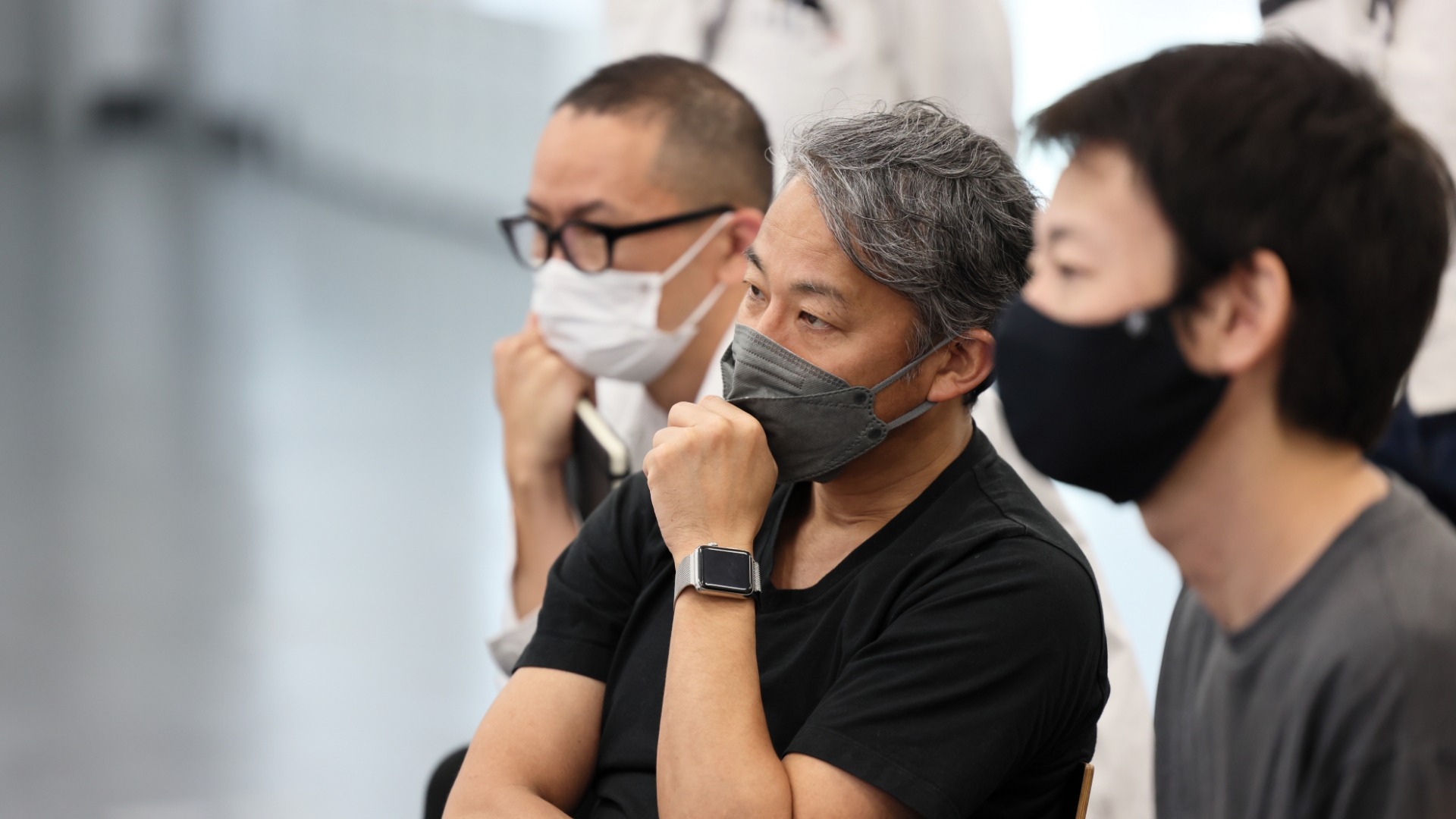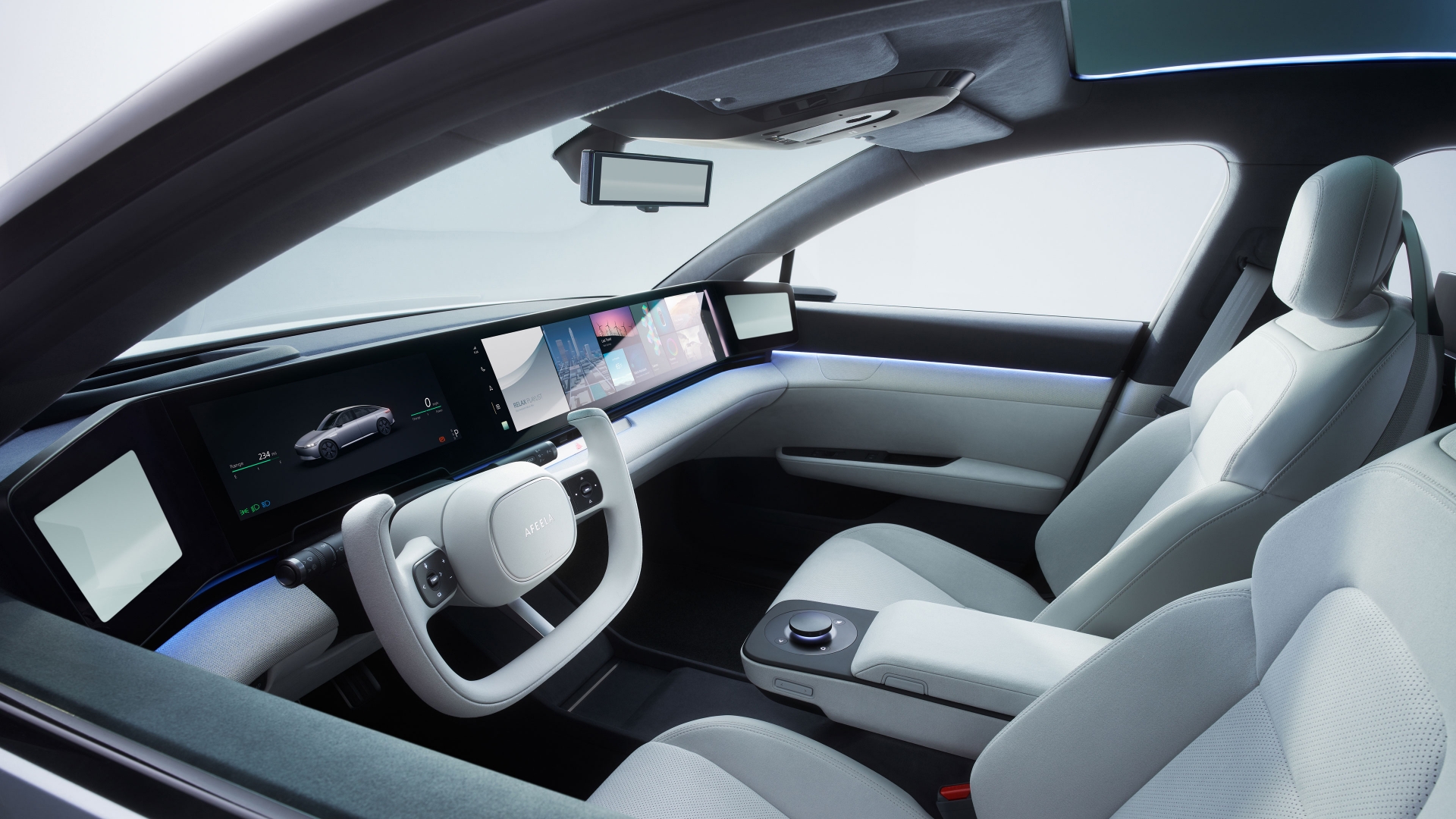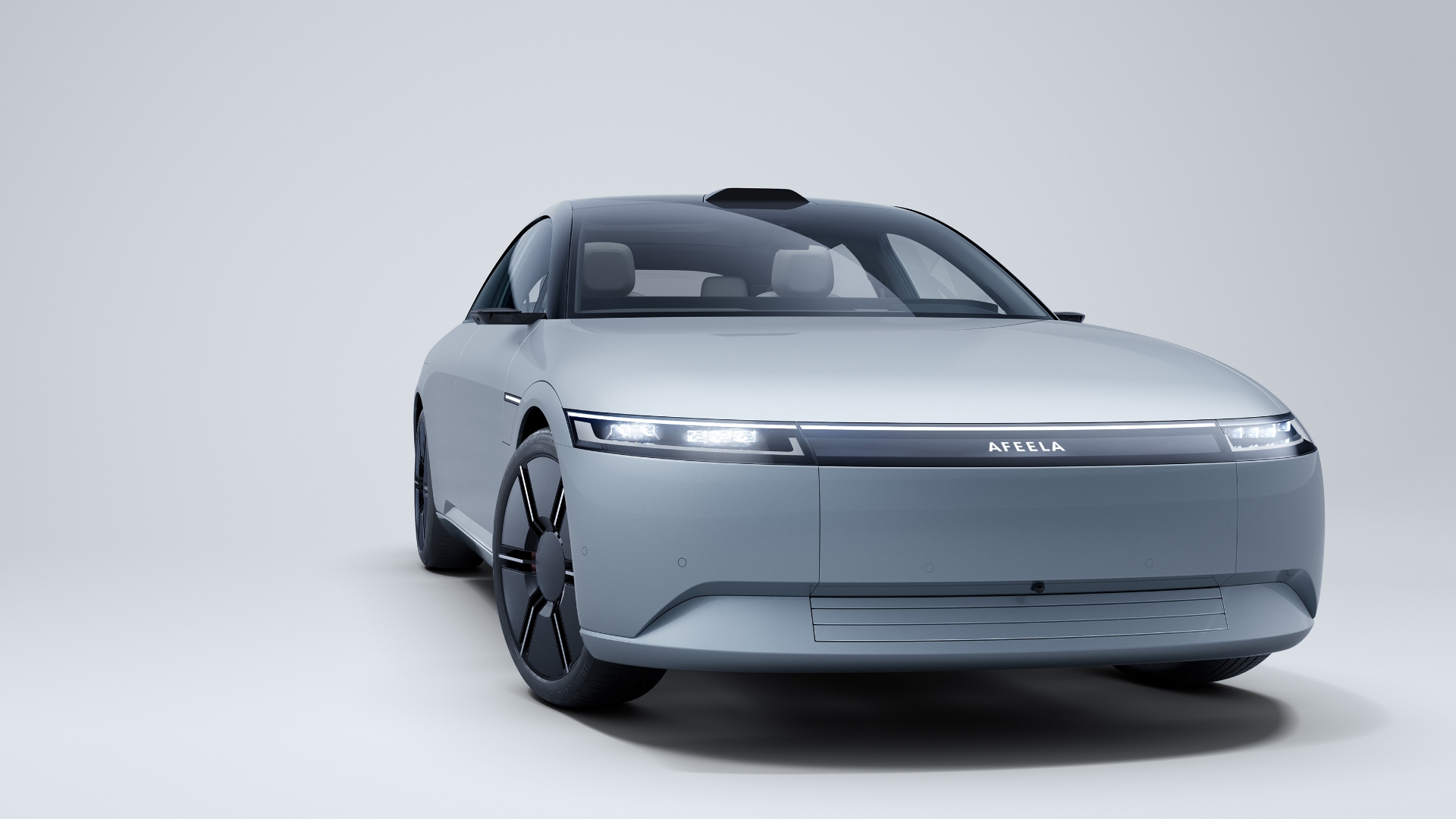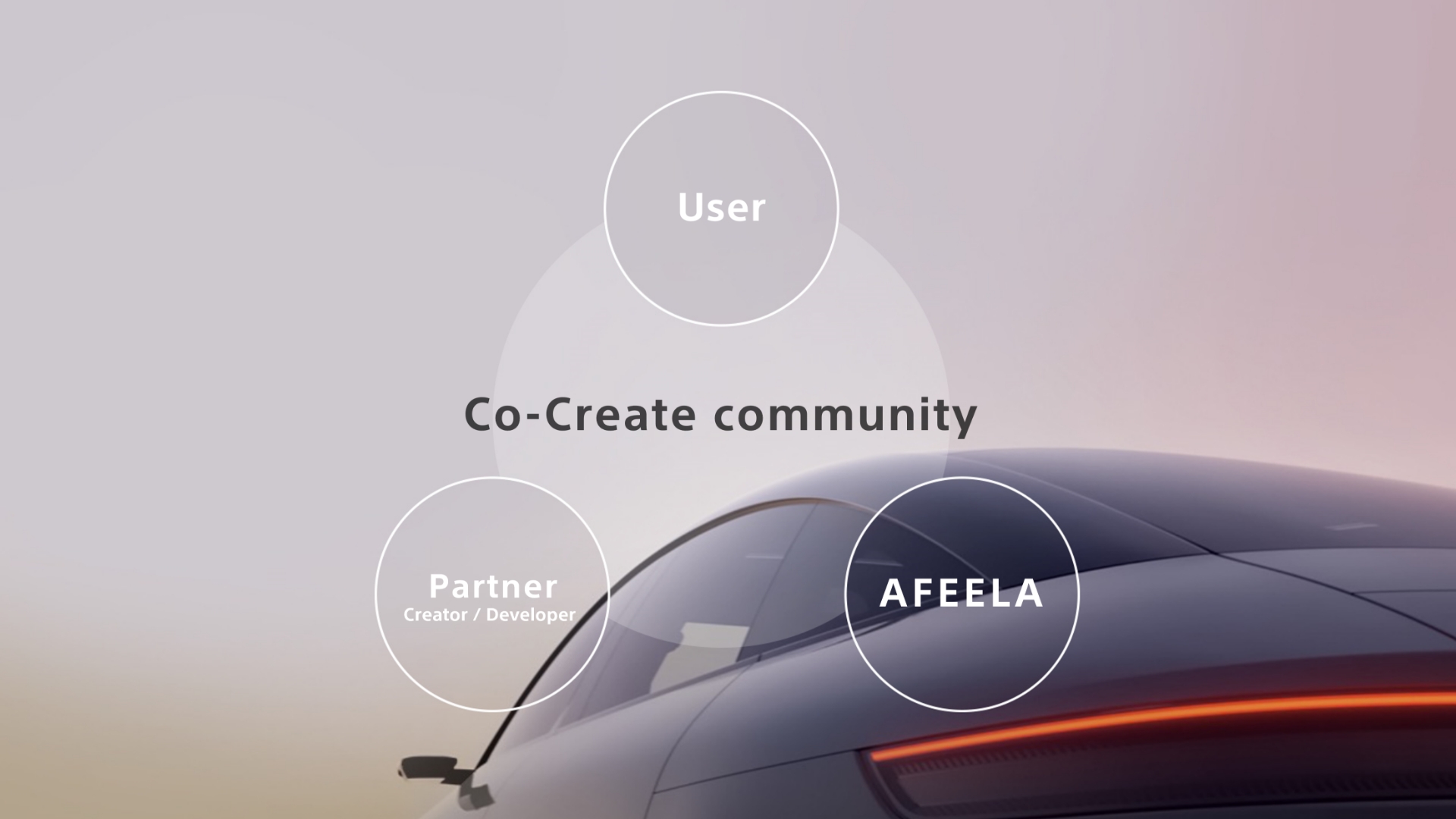
Daisuke Ishii
Sony Honda Mobility Inc.
Head of Creative & Brand Strategy Department
Joined Sony in 1992 and heads the Sony Group’s Design Team as of 2021. Also serves as the Head of Design and Brand Strategy Department at SHM. Started his career at Sony as an industrial designer and designed products such as Handycam, Walkman®, and aibo With working experience in the EU design office, he headed the design team responsible for AI robotics such as the ‘aibo’ entertainment robot, the VISION-S prototype vehicle and ‘Airpeak’, a project for robotic drones, and other new business development projects and created not only products, but also services, brands, and communications comprehensively. Ishii has also served on the 2016/2021 iF Award jury, 2019/2022 DFA Award, 2023 Good Design Award jury, 2022-24 Visiting Professor at the Politecnico di Milano, 2023 Advanced Art Design Adviser at the Research Center for Advanced Science and Technology of University of Tokyo.
A Meet AFEELA was held at TOKYO NODE on Tuesday October 17 prior to the public unveiling of the AFEELA Prototype, which will finally make its Japan debut at the JAPAN MOBILITY SHOW 2023 on Saturday October 28th.
This article is based on an interview with Daisuke Ishii, Head of the Design & Brand Strategy Department at Sony Honda Mobility (SHM), who presented at the Meet AFEELA event. Sony Group developed VISION-S, giving the helm for design to Ishii, who has led AFEELA Prototype’s design team at SHM. He shares the story behind the project and the creation of the NEWTRAL design concept.
Two companies merge united by the designer’s vision through a word.
In September 2022, Sony and Honda joined forces to create something new. In the process of uniting, an original organization emerged: a team called the Design & Brand Strategy Department. It aimed to approach design from a corporate standpoint, integrating design with brand strategy.
This new department comprised equal parts Sony and Honda members, with designers from all aspects of the discipline — interior, 3D modeling, CMF, UI/UX, as well as communication and special design. The team held the reins to every aspect of design, communication, and brand strategy.
The first thing they set out to do was to formulate the company’s purpose. The designers took the lead and began interviewing all employees. Keywords were extracted from interviews and discussed among the management team. The final result was this purpose: “Move people, through the pursuit of
innovation with diverse inspirations.”
The brand strategy team and art directors explored words and their connections with key visuals to decide on the purpose statement. Recently, they have turned to word design, which started with the company’s purpose and then a corporate vision for SHM. Designers led workshops with top management to develop words, a skill cultivated at the company and an experience the team used for its launch. Ishii pointed out that they understand the power of words when uniting an organization of different cultures.
Simultaneously, the team developed its product’s concept and brand name. The brand name had to embody the core of the new company’s offerings. The best approach to development seemed clear to team members with experience in the technology of mobility arena.
Three key concepts emerged from discussions: Autonomy (Evolving autonomy), Augmentation (Expansion of time and space) and Affinity (Symbiosis with people and society) — 3As. They then sandwiched the word “FEEL” between these “A”s to create AFEELA.
Throughout the process, they explored countless names, deciding on this one that expresses an intention to create a new relationship between mobility and people. In this mutually empathetic relationship, mobility senses people, and people feel mobility through technology.

In new fields, disparate design cultures harmonize, creating a perfect storm for design.
This led to NEWTRAL.
The concept of NEWTRAL underlies all creative work. It’s a true portmanteau of new, trial, and neutral — the latter to convey a sense of harmonization. “Neutral” communicates a neutralization of physical properties, creating a sense of something beyond the physical. Cultures from different organizations merge, building chemistry and a world of elements in harmony — a clean and transparent world.
NEWTRAL, a new neutrality. That’s what they called it, and SHM used it as the cornerstone of every design project. Sony and Honda — two Japanese companies — created a new fusion of brands unlike any before it. Ishii expressed that he would like people to embrace a neutral perspective, transcending deep-seated beliefs and concepts linked to National and racial agnostic concepts.
This sense of neutrality is evident even in the company’s interior office design. The single-floor office area creates a neutral space for diverse dialogues across departments. It includes a black-out zone for focus on creation and ideation and a white zone for active communication. The floor incorporates warm natural wood design cues that help create an open mood.
These two dissimilar zones serve SHM to contribute to ideation as employees move between them. The main entrance is devoid of a reception counter as a symbol of a new company heritage. The space is clean and open without waste, unlike cluttered entrances of the past. Here, one witnesses new value creation by diverging from historical paradigms.
A wide array of creative and technical fields come together for co-creation.
The office design concept was not only the result of interior designers but also co-creation with architects. This chemistry is what Ishii cultivates in the office. In the future, they hope to widen their sphere of co-creation both creatively and technologically.
The idea is to recruit people unrelated to the traditional mobility development processes and increase points of contact. One area is to fuse virtual and real worlds through games and technologies such as AR, VR, and MR, making driving games for the real world or exploring real-world extensions and amalgamations in games. The intersection of virtual data and the real world represents a pivotal theme for future development.
Currently, the NEWTRAL concept is the canvas on which the company draws ideas and new experiences for co-creative relationships. It’s not only a design concept, but a foundation to promote and accelerate co-creation.

AFEELA Prototype Interior | The user interface is a widget-type for intuitive operation, streaming movies, games, and 360 reality audio that can be enjoyed through speakers installed in each seat.
From virtual to real. The AFEELA Prototype took shape quickly thanks to 3D design.
Merging virtual and real worlds was pivotal in developing the prototype. In traditional car styling, everything starts with 2D sketches. However, with AFEELA, design started with 3D CAD technologies, allowing designers to confirm realistic perspective renderings anchored in true-to-life dimensions within the data, ensuring development meets packaging and technical criteria.
Further shortening the time between concept and development was 3D CAD’s ability to improve surface modeling. The entire AFEELA project is an exercise in no waste: the realistic 3D design created a viable model that works seamlessly into full scale. Also, by switching back and forth between real and virtual worlds, the team drastically shortened the design proofing times. This approach brought the company from concept to product in a short period.

AFEELA Prototype Exterior | The blacked-out cabin and streamlined exterior. This sleek, streamlined design represents its advanced sensing technology, ensuring safety, security, and comfort. It’s defined by a geometric roofline and smooth horizontal body lines, adding to its stylish looks. Its suspension is sharp and dynamic, hinting at the innovative EV platform that awaits in its next generation.
The car is itself a living, breathing robotic design.
The design cultures at Sony and Honda differ but have some commonalities. Both have championed Japanese industrial design from its advent and share historical contexts. Ishii points out that there are common product philosophies between the Walkman, which eliminated waste, and the CIVIC — a prototype for the three valve per cylinder car.
Ishii points out that in developing the AFEELA styling, he was conscious of the robotics. Sony and Honda both have their popular robots — the aibo and the ASIMO, respectively. He believes that only Sony and Honda could incorporate robotics of this magnitude into mobility design.
The product’s surface design and shape showcase robotics, while the user experience creates a sense of liveliness that harmonizes with humanity. This focus led to personal recognition linked to sensors, keyless entry that automatically opens doors when the owner is detected, as well as a front Media Bar that illuminates in a breathing pattern. These elements all emerged from an intention to combine technology with human warmth.
Imagine a world where mobility recognizes and senses people. That’s what SHM is pursuing and what the name AFEELA implies. With forty-five sensors*, the AFEELA Prototype utilizes sensing data to pursue this ideal harmony between the human and the vehicle.
*Design modifications as of October 2023 include 45 cameras and sensors.
Driver recognition allows the car to personalize settings and choose relevant content. A panoramic screen running horizontally across the entire dash allows the driver to see all information with minimal side-to-side movement. A customizable home screen to align with user preferences alongside a navigation system that predicts destinations based on frequent visits to locations. To improve the cabin’s environment, drivers can remove unnecessary information as well as choose a screen saver that compliments ambient lighting.
This personalized content demands co-creative work models. AFEELA is still a prototype, and SHM hopes to see creators and developers come together to drive this experience of creating new content. Ishii states that there is a lot of room for co-creation with outside creators and developers.
Ishii points out that we should all put our heads together for not only personal experiences but also for essentials, such as how people use the car. More specifically, that people should work together to create an ecosystem. A crucial difference between an electric and gasoline-powered vehicle is its value when it’s not moving.
In an electric car, one can enjoy music without a gasoline engine running. It’s a little like another living space. Our use of electricity in the home may change as a result too, and this will also increase the value of EV mobility. The car can act as an entertainment space — like a theme park. It’s fun to think of all the possibilities, so SHM is searching for specialists and partners from various industries.

AFEELA Co-Creation Program (tentative name) | Applications that provide services via the cloud by using data from vehicle sensors and cameras. The goal is to create mobility that responds to each user, from entertainment to benefits for daily routines.
“I want people who have never been interested in cars to see the JAPAN MOBILITY SHOW 2023.
This approach is one that only a tech company can take.” —Daisuke Ishii
Ishii emphasizes that he would like to see more people excited about future possibilities for automobiles based on this new set of values. It’s because of this that he feels the importance of SHM’s presence at JAPAN MOBILITY SHOW 2023.
He hopes that those interested in tech but not cars will discover a new perspective through the Sony-Honda partnership. The SHM booth at the mobility show feels like a real product in a virtual space. Here, the spatial design team brought the brand concept to life at a motor show, showing a unique approach as a tech company unlike booths at motor shows before it.
Editorial Review
Daisuke Ishii masterminded the AFEELA Prototype and led its development under the concept of NEWTRAL, meaning new neutrality and experimental. For him, he’s just getting started, and already a fresh chapter has begun. This project marks a new understanding of collaboration. NEWTRAL will be a hub, bringing together innovators, developers, and startups while actively involving users to craft a novel, immersive mobility experience. NEWTRAL is a commitment to constant growth and progress toward a better future.
Throughout the interview, a phrase often came up: “Let’s put our heads together on this one.” Ishii’s desire to create mobility that breaks the mold and develops a mobility experience that entertains while traveling from point A to B may change how we see cars.
He’s eagerly seeking feedback from future users. We invite you to attend the JAPAN MOBILITY SHOW 2023 to experience the real thing and explore the AFEELA Prototype’s potential and mobility’s future.
The JAPAN MOBILITY SHOW 2023 opens to the public on October 28.
Please stop by out booth to see the real AFEELA Prototype.
Special Site: https://www.shm-afeela.com/en/jms/2023/